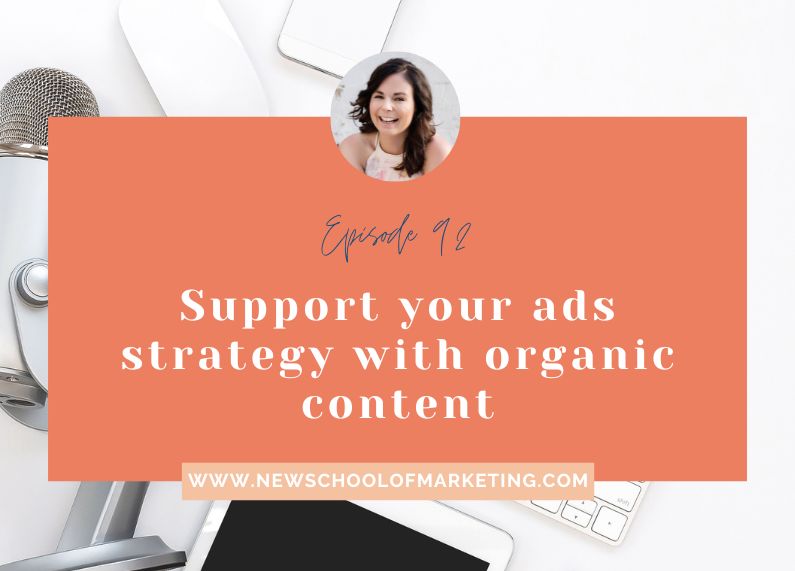
Facebook ads can be amazing at increasing your traffic, attracting leads and converting to sales, but the days of simply putting up an ad and it doing exactly what you want are over.
Back in the good old days you could simply run a lead generation campaign and get leads at a really low cost per lead, but that’s not always the case nowadays.
The ads landscape has changed a lot. There are more players, but not necessarily more space in the newsfeed so it’s becoming more and more competitive.
Throw in an iOS change and suddenly everything about running ads has changed.
While I miss the good old days, I also welcome the change because it means that us marketers have to work smarter.
We’re really going back to basics, back to the essence of marketing, which is to build relationships for the purpose of promoting and selling products and services.
So how do you get your advertising dollar (and sales) to go further?
You need to support your ads with organic content, and the other way around.
Tune in and listen + find the supporting images on the blog
Connect with me
Website: www.newschoolofmarketing.com
Facebook: @newschoolofmarketing
Facebook group: @newschoolofmarketing
Instagram: @bianca_mckenzie
Love the New School of Marketing Podcast?
Let’s be honest and upfront, because you know that’s what I’m all about. Podcast reviews are super important to iTunes and the more reviews we receive the more likely iTunes will reward us with better reach.
I want to reach more course creators, store owners and awesome business builders that can add extreme value to our awesome insiders. I already love that you’re here and ready to rock your business, but I’d be extremely grateful if you would review me on iTunes and SUBSCRIBE!
Can’t wait to teach you everything I know about online marketing!
Transcript
Welcome to the New School of Marketing podcast. I hope you’re all well.
We have just farewelled gastro from the house, which my daughter picked up at daycare. The poor thing was very sick all of Friday and did nothing but sleep on Saturday. Then on Sunday she was back to her bouncy self. Actually, she was even more bouncy than normal. I guess all that sleeping had loaded her up with energy, it was exhausting for my husband and I haha.
For any other parents out there, I feel for you when your little ones are sick. It’s such a juggle especially when trying to run a business. And it’s always heartbreaking to see them sick.
Hopefully that’s it for the year, although I don’t think it’s going to be that easy.
Back to today’s topic.
Organic content.
Facebook ads can be amazing at increasing your traffic, attracting leads and converting to sales, but the days of simply putting up an ad and it doing exactly what you want are over.
Back in the good old days you could simply run a lead generation campaign and get leads at a really low cost per lead, but that’s not always the case nowadays.
The ads landscape has changed a lot. There are more players, but not necessarily more space in the newsfeed so it’s becoming more and more competitive.
Throw in an iOS change and suddenly everything about running ads has changed.
While I miss the good old days, I also welcome the change because it means that us marketers have to work smarter.
We’re really going back to basics, back to the essence of marketing, which is to build relationships for the purpose of promoting and selling products and services.
We’ve all heard the saying that people buy from people and while that isn’t necessarily true for your toothpaste brand or your loaf of bread, but when it comes to buying services or bespoke products we want to know who we’re buying from or working with.
Besides, you’re not one of the big fast moving consumer goods with an almost endless advertising budget. You need maximum exposure but not with a maximum budget. I hear you.
So how do you get your advertising dollar (and sales) to go further?
You need to support your ads with organic content, and the other way around.
What does organic content mean?
When I speak of organic content I mean content marketing.
Content marketing is a type of marketing that involves the creation and sharing of online material such as blogs, videos, social media posts, podcasts etc.
The main thing to note is that it doesn’t explicitly promote a brand but is intended to stimulate interest in its products or services.
So your organic content isn’t sales content, it’s usually content that showcases your business in a way that builds authority, affinity and trust.
Most businesses use a number of different platforms to share their content, and there is no right or wrong. You can use multiple social media platforms, you can have a blog, a podcast, a youtube channel.
The main thing is that you are where your audience is and you create content your audience wants to consume.
So how do you support your sales with organic content?
Well, most businesses already create some form of content. You might already be posting on Facebook, Instagram, have a podcast etc. However, most of you won’t be spending any money to make that content go further.
Brand awareness and reach ads are one of the most underrated Facebook ads campaigns and they only require a teeny tiny amount of ad spend.
So you can make the content that you’re already creating go further and get in front of more people.
For example, if you’ve created a reel and you get 1,000 views on it and then it basically loses momentum. But you’ve spent all that time creating this awesome reel and it would be amazing if more people could see it.
What you can do is put a small amount of money behind it, let’s say $2 per day, and get it seen by many more people.
Not only do you now have a reel that more people saw and more people connecting with your business, you can also use this data to create a custom audience of people who watched it and then create and show them a new ad. For example, you can ask them if they want to download your freebie.
This audience is now more qualified because they have already seen your brand and you’ve started the authority, affinity, trust process. Most of the time this strategy results in higher conversions at a lower cost because they already know you a little bit.
Another great thing about this approach, apart from enhancing your conversions, is that Facebook loves engagement and it’ll see that you’re getting more engagement and so it will start to favour your organic and paid reach.
Win win right?
If you’ve been listening to this podcast for a while you would have heard me say that customers need multiple touch points. They generally won’t buy from you the first time they come across you.
I’m not entirely sure what the number is now but it’s somewhere between 7 -12 times. So someone needs to come across your brand an average of 7-12 times before they become paying customers.
Adding a little bit of ad spend behind the content you’re already creating will help you with increasing those touch points.
The thing I love most though is that you’re already creating content, so why not leverage it and make it go further. You’re spending all this time crafting social media captions, recording reels, writing blog posts – or whatever your content creation of choice is – it would be a shame not to make it go as far as it can go. We all know that social media posts don’t last long.
The lifespan of an Instagram post is 48 hours, and that of a Facebook post is 6 hours, so that means that if your post isn’t seen within that timeframe it’s going to die a slow death.
I know I know, dramatic but it’s true. Your posts don’t live very long.
So why not use a teeny tiny amount of money to make them last longer and go further so that you’re getting more out of them.
And before you race off to hit that boost button. STOP.
Do NOT boost your post, or even use the in-app advertising options on Facebook.
There’s a much better way to turn your organic posts into ads and I’ll walk you through it right now. For those who need visuals, I’ll add screenshots of the sections on my blog so you can follow along.
Your first step is to decide which piece of content you want to turn into an ad. Of course you don’t want to turn all of your content into ads, it needs to be strategic and align with what your business offers.
Choose content that relates to the problem you solve for people. This can be some of your ‘how to’ content or even customer testimonial videos.
The next step is to define which audience you want to target.
The idea is to reach new people so you want it to be shown to people who don’t know you yet. That doesn’t mean you’re just going to show it to everyone, no, think about who your ideal customer is and what their interests are. Think about where they spend time, magazines they read, people they follow, any other specifics about them for example are they parents of pre-school children?
The next step is to set up your campaign in Facebook ads manager – yes, stay away from that boost button.
In ads manager you have control over your campaign objective, which you don’t with a boost post. Also, you can test different audiences inside the ads manager, with a boost post you only have one option.
Create your campaign by clicking the ‘create’ button inside ads manager. Then you need to choose your objective. My choice would be to turn a video or reel into an ad, ideally with a video view campaign or engagement campaign.
If you’re sending people to a blog post or podcast episode you’ll want to choose the traffic objective.
You need to also set a budget. Like I said, you can start with $2 per day or if you have a bit more to spend increase it to $5 – $10 a day. The rule of thumb is to use about 5% of your monthly budget on awareness campaigns.
Follow the steps inside ads manager on how to set up your campaign. You’ll be selecting your audience, add your budget and select the post you want to turn into an ad. If you come across any options that you’re unsure of, my advice is to leave it at the default setting.
So the last step is to turn your post into an ad. Many people don’t know about this option because a lot of them use Facebook ads to create new ads but you can actually turn an existing post into an ad.
When you come across the ‘ad setup’ section, select ‘Use existing post’ and then you have the option to find your post inside your Facebook or Instagram account.
If you’re turning reels into ads there are a few restrictions so be aware of this. At the time of recording you can’t turn reels into ads that have stickers on them and some music is also restricted. If this is the case, you could download the reel and upload it as a video ad, which isn’t what I’m trying to explain in this episode but it’s an option.
Once you have selected your post, check the preview and if you’re happy with it you can post it to go live.
You’ll be able to monitor the results inside of your Facebook ads manager dashboard. Remember that you’re using a brand awareness objective, so don’t go looking for sales. This is purely to get in front of new people and to make your organic content go further in the authority, affinity and trust game.
Ok, so that’s it for this week. If you want to support your sales, use organic content to build authority, affinity and trust and increase the amount of touchpoints you have with your audience.
It’s a great way to leverage your existing content for greater reach and once you’ve ran a few of these ads you’ll start building specific audiences that you can then retarget with other content.




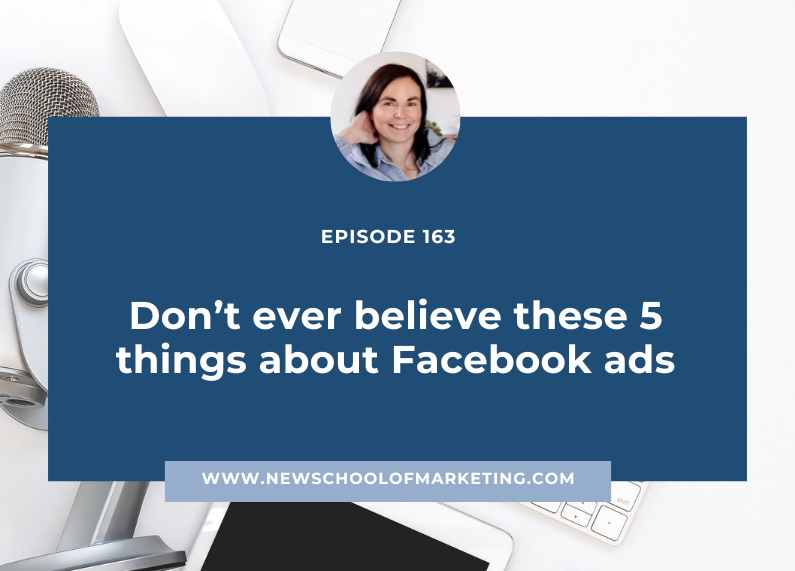
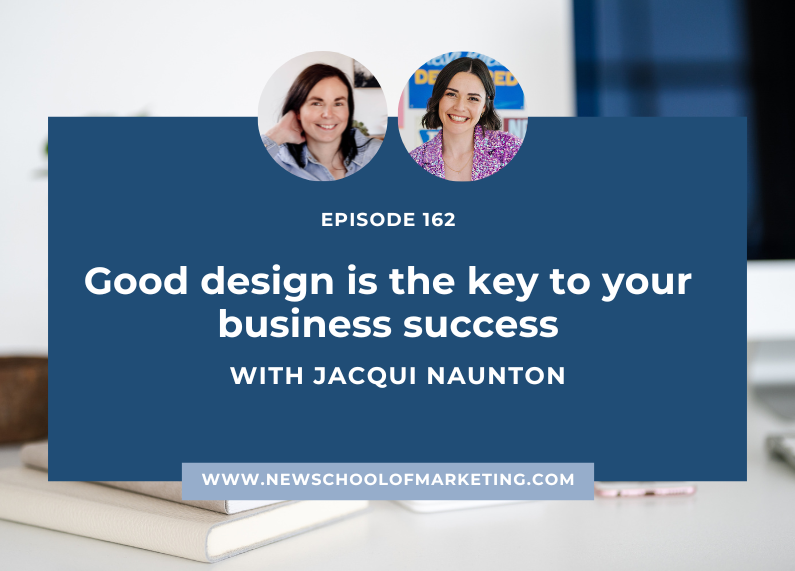
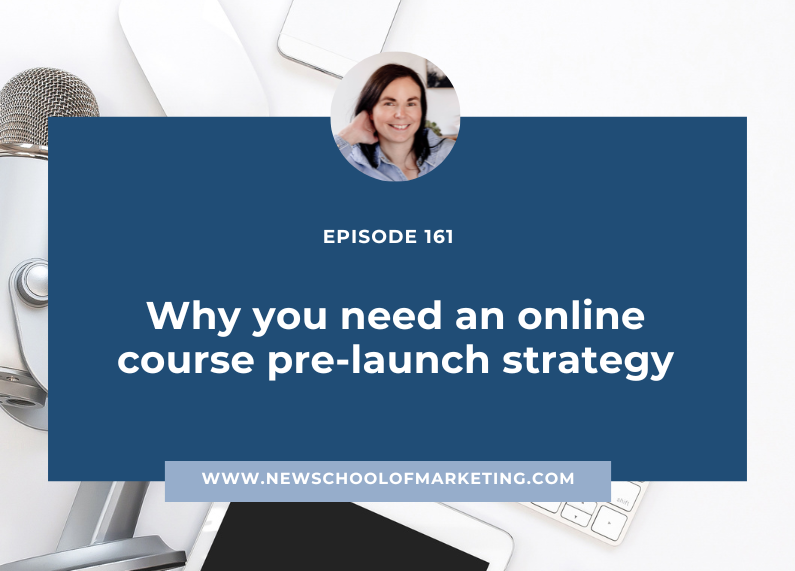
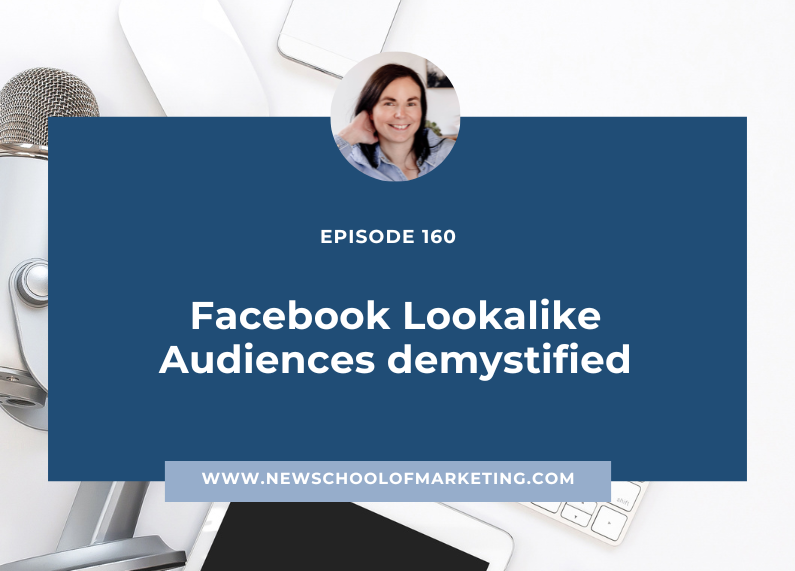
0 Comments